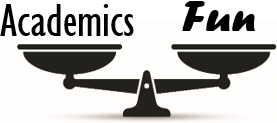Learn how schools have created productive ELPs.
Learn how schools have created productive ELPs.
Extended learning programs (ELPs) benefit students—especially those who struggle—in several ways. ELPs provide them with a fun learning environment and create a sense of belonging. These learning programs are also a productive way to support learning.
ELPs engage students and boost achievement. Researchers found that ELPs “had positive and significant effects among students at risk for failure in reading or math.”1 Successful schools are seeing positive results when their ELPs align to standards and directly support classroom instruction. However, crafting a program that supports classroom instruction without redundancy can be tricky.
One way to provide congruency with classroom instruction is to maintain a focus on grade-level standards, but in a different way. One key study found that successful ELPs were not merely an extension of the school day, but a chance to expand upon what students were learning.2 Using resources that are congruent with classroom instruction is an effective way to reinforce rigors of standards-based instruction in a low-risk environment. Although ELPs focus on skills and standards students need, they look and feel different to students. But make sure the programs are teachable. ELPs should be easy to use and effective. Look for resources that are organized by standards and that have a consistent instructional design with ample teacher support to guide implementation.

Creating a balance between academics and fun is also important. One way to boost the “fun factor” is to create a reward system for academic success that allows students to choose a non-academic reward.
Finally, communication between extended-learning staff and students is important. After all, it is the teacher who is recommending students for ELP, so it is critical to keep the lines of communication open.
Conclusion
ELPs share the same goal as the classroom but should use totally different styles to keep students engaged. With an eye on academic achievement, creating a risk-free, fun learning environment is a welcome asset into struggling students’ world.
References
(1)Lauer, P. A., Akiba, M., Wilkerson, S. B., Apthorp, H. S., Snow, D., & Martin-Glenn, M. L. (2006). Out-of-School-Time Programs: A Meta-Analysis of Effects for At-Risk Students. Review of Educational Research, Vol. 76, No. 2 (Summer, 2006), pp. 275-313. American Educational Research Association. 3. Vandell, D. L., Reisner, E. R., & Pierce, K. M. Quoted in What does the research say about afterschool programs. November 2017. The Afterschool Alliance. Retrieved from http://afterschoolalliance.org/documents/what_does_the_research_say_about_afterschool.pdf
(2)McCutcheon, Emily R., Hadjiharalambous, Sissie. (2016) Profiles of Extended Learning Programs: Promising Practices in Tennessee’s 21st Century Community Learning Center. Retrieved from https://www.tn.gov/content/dam/tn/education/documents/ext_learning_promising_practices_profiles.pdf
Peoples Education, Inc. | Mastery Education, Inc.
25 Philips Parkway, Suite 105 | Montvale, NJ 07645 | 800-822-1080 | MasteryEducation.com


